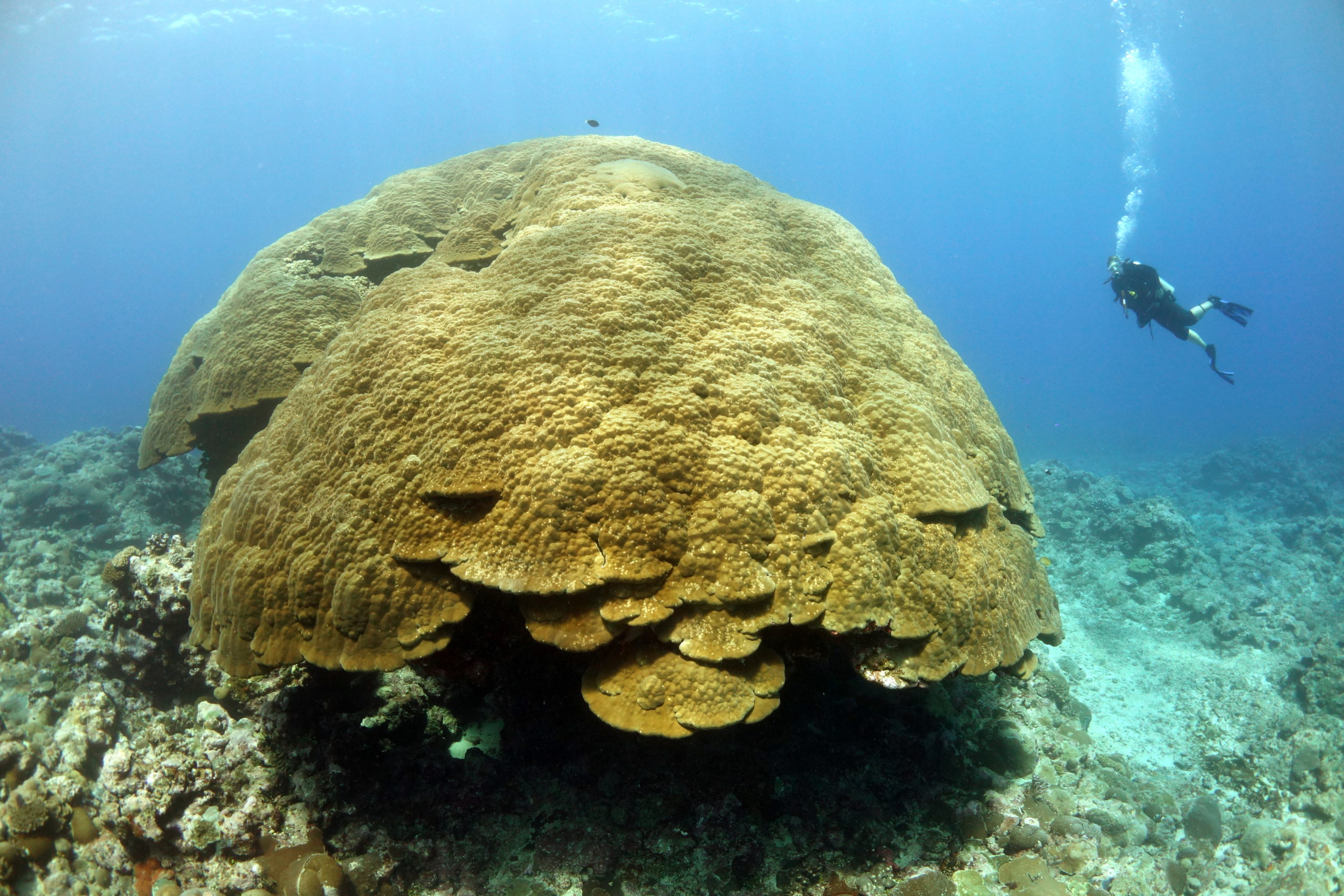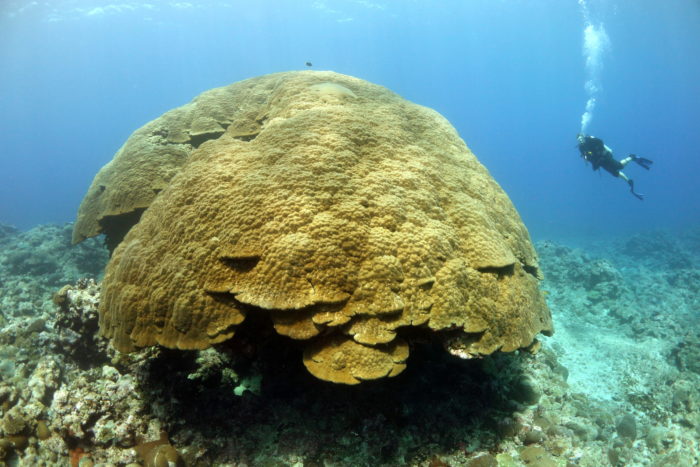
All About Big Momma

Photo credit: Wendy Cover
At the heart of the National Marine Sanctuary of American Samoa rests Big Momma – a massive porite (stony polyp) coral colony.
A chain of islands located in the Pacific Ocean between Hawaii and New Zealand, American Samoa is a chain of seven islands and atolls containing rainforests, reefs, volcanoes, and beaches. Located off the island of Ta’ū, the easternmost island in the chain, Big Momma lies within National Marine Sanctuary of American Samoa’s Valley of Giants.
This coral community is more than 500 years old and one of the largest in the world. Big Momma is currently more than six meters high (the height of a giraffe!) and has a circumference of 41 meters. This massive and important ecosystem provides habitat for all kinds of marine plants and animals and allows for rich biodiversity in the area, including marine mammals, sharks, colorful fish, invertebrates, and more. To see Big Momma for yourself no matter where you are (virtually) click here.
In addition to its incredible scenery, American Samoa is known for unusually resilient coral reefs. Reefs along American Samoa have survived invasive species, hurricanes, rising temperatures, and low tides that would otherwise wipe out many other reefs around the world. Unfortunately, increasing pressures on reefs worldwide are also threatening Big Momma and surrounding coral communities. These pressures include ocean acidification, pollution, coral disease, and climate change effects, all of which can lead to bleaching and die-offs in coral communities. NOAA’s Office of National Marine Sanctuaries and other governmental agencies regularly observe coral ecosystems in the National Marine Sanctuary of American Samoa and can track changes over time, but we can all do our part to protect Big Momma for (at least) 500 more years and reefs around the world. Actions we can take no matter where we live include:
- Reducing our home energy consumption
- Traveling more efficiently, including carpooling, biking, walking, and choosing public transportation where available
- Refusing single-use plastic items and choosing reusable items
- Buying responsibly sourced food that produces fewer nutrient run-off or other pollutants
- Buying responsibly sourced and sustainable seafood
- Supporting policies that promote the preservation and conservation of coral reefs
